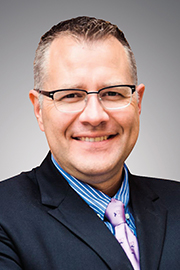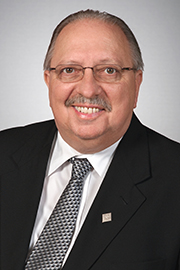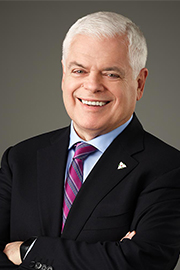- Mar/7/23 9:00:00 a.m.
- Re: Bill 71
It is a privilege to rise for second reading of our government’s proposed Building More Mines Act, 2023. I want to indicate that I’ll be sharing the government’s leadoff time with the parliamentary assistant to the Minister of Mines. The PA will be touching on the importance of Indigenous partnerships to the future of Ontario’s mining sector and the progress to date in developing the Ring of Fire.
Before I begin, I’d like to take a moment to thank the mining industry leaders and other partners who have provided my ministry and me with invaluable feedback on the opportunities and challenges they’ve encountered in the sector under the previous governments. The feedback has informed the Building More Mines Act, Mr. Speaker.
Through the minister’s mining industry council—MMIC—meetings and other discussions, they provide us with actionable ideas on how to improve the Mining Act and move the industry forward. The main theme that continually came up in our discussions was improving inefficiencies in the processes. That is what this act is all about. It’s about making the ministry more efficient. It cannot take 15 years to build a mine. It’s simply unacceptable when we have the knowledge, the skilled labour force and the innovative solutions to address the issues.
In the early 1960s, the mineral deposits at Kidd Creek were found and three years later the mine was up and running and producing valuable minerals. The sudden influx of people and the economic activity allowed the surrounding communities to experience an economic boom in a very short period of time. Today, Mr. Speaker, it takes 15 years to do the very same thing. The mines get built slower, the economic benefits move slower and the processes take longer now than they ever have. How is that possible, when today we know more and our technology is better? It has everything to do with our outdated and unnecessarily restrictive regulations.
Previous governments sat idly by and let this problem fester. We are here to fix the 15 years of Liberal negligence, and it starts with updating the Mining Act to match the reality of the current state of the mining industry. This is so that the exploration and mining sector can continue to do what it does best: making the mineral discoveries and building the mines of the future.
Our government remains focused on creating the conditions to help attract investment and optimize competitive advantages in the sector. This includes creating the most logical legislative and regulatory environment possible. We are doing all of this without compromising our world-class environmental standards or Indigenous duty to consult.
Mr. Speaker, an important distinction to make is that governments don’t build mines—companies do.
As Ontario’s Minister of Mines, I’m extremely passionate about the mining industry and the critical role mining plays in Ontario’s economic prosperity. Mining has long been a driver of growth for Ontario. We remember the days when the ONR was being driven from North Bay to Cochrane to access the agriculture belts in there. They found silver and cobalt, and that kicked off the whole thing. That led to the gold discoveries in Porcupine and it led to the gold discoveries in Kirkland Lake and silver discoveries in Elk Lake. It also led to the base metal discoveries, as well, in the Horne mine in northern Quebec.
Mining remains a cornerstone for our economy today—and will for many years to come. I come from a mining town, and I’ve seen first-hand how the industry can build up communities. I was born and raised in South Porcupine, at the historic Dome-Ex property—actually, the mine site village of Dome and Dome-Ex on the Dome property. I was raised in a house in the shadow of a mine. I have mined all my life. My family has been in mining for over 100 years.
My father was born in 1920 in a house behind the mill, and obviously, my grandparents were there before my father was born. Seven kids were raised in that house, and my father was able to provide for us because of his career in mining. My father’s work inspired my career, and I have worked in the mining industry for the bulk of my career.
My father was 16 years old—he was the eldest in his family—when he finished grade 13—at 16 years old. So, in 1936, he started to work at the Dome mine. Why? Because there were no other jobs. It was in the middle of the Depression. And that’s what he did for the rest of his career, absent the time he spent in the Second World War. And as I said, we raised seven kids because my father worked in mining.
That’s what this act is all about: giving more people the opportunity to have a rewarding career in mining or the associated industries. The member from Sudbury knows all about this: He landed a career in a smelter that helped him buy a house and start a family, something all Ontarians have been asking for. Mining provided for that future.
As I’ve said before, I have worked in the mining industry for many years, my whole career, and I have witnessed a lot of changes and challenges first-hand. In my time in the industry, I met some of the best and brightest people the world of mining has to offer—people who never stopped innovating and coming up with solutions to challenges that they faced.
It’s no coincidence that the technology that has been driving progress in the mining industry is because we have such a high percentage of highly paid professionals that are leading this industry. It’s no accident that the intake water from Musselwhite mine is cleaner than the discharge water. It’s no accident, with the Côté Lake mine, there is no discharge water. That mine took 17 years to permit, to get across the line so you could start building this mine, and there is absolutely no discharge water out of that facility. It’s a remarkable achievement, and it’s done through the technology and the skill and the ability of the mining people.
Despite these challenges, Ontario remains a world-class mining jurisdiction and is always among the top 10 jurisdictions in the world for mineral exploration spending. But we can do better. We must do better.
The industry contributes nearly $13 billion annually to Ontario’s GDP and provides 75,000 jobs associated with mineral processing and mining supply and services. Ontario’s mining sector has one of the highest proportions of Indigenous workers of all industries in the province. Indigenous employment accounts for 11% of direct mining jobs in Ontario.
One of the things I did in my career with Placer Dome was help develop the Musselwhite mine. With those agreements—and they were very progressive IBAs that were signed with five First Nations and they ended up being revenue-sharing agreements that I led that directly related to increased prosperity with the communities surrounding that mine because of the activity in that mine. That’s what activity in that sector can do.
As you all know, I worked with Wahgoshig Resources Inc. That’s the commercial entity for WFN. WFN is the Indigenous community on the south shore of Lake Abitibi. You start off with relatively passive economic involvement and by the time we had finished, the Wahgoshig First Nation was a participant in the real economy by building a 100%-owned diamond drilling company, owned by the Indigenous people, by capitalizing on the economic opportunities in their traditional territory. That’s what we did working together with First Nations.
About 25% of direct mining jobs in Canada are in Ontario and around two thirds of these direct mining jobs are in northern Ontario.
Ontario’s statistics are equally impressive when it comes to mineral exploration. In 2021, Ontario was second in Canada for mineral exploration expenditures, totalling $878 million, roughly 24% of all mineral exploration expenditures in Canada. As of March 1, 2023, there are approximately 366,000 active mining claims in good standing in Ontario. In 2021, Ontario was Canada’s third-largest mineral producer, producing $11.1 billion worth of minerals—20% of Canada’s total mineral production.
Ontario is one of the leading world producers of gold, nickel and platinum group elements. In 2021, Ontario produced approximately $3.1 billion worth of critical minerals with 10 of those 36 operating mines in Ontario producing critical minerals. That same year, platinum group elements and copper had the highest critical mineral production values, at least $1.2 billion and $1 billion respectively. That’s what mining does to the economy and for the economy for Ontario.
Ontario produces approximately two fifths of Canada’s gold production, one third of Canada’s nickel production, one quarter of Canada’s copper production and two thirds of Canada’s platinum group metals production.
Some of the world’s largest mining companies operate in Ontario, such as Glencore, Vale, Newmont and Barrick. These companies benefit from a range of provincial support programs, including programs to help manage the energy costs associated with mineral production.
Through tax incentives and targeted business supports, we help companies across all phases of the mining sequence leverage opportunities to invest in and promote their mineral and mining projects.
There are currently 36 active mining operations in Ontario, the majority of which are in northern Ontario, and there are more new mine construction projects and mine expansions under way as we speak. There are many fantastic projects in various stages of development. Under our government, we want to help pave the way so that more critical mineral mines get to production that much sooner—mines like Vale’s Copper Cliff south mine project that I visited with the Premier this past October. Phase 1 of the Copper Cliff complex south mine project reunites the south side of Copper Cliff mine with the north side and creates a new supply hub for low-carbon critical minerals, helping anchor Sudbury as a homegrown and sustainable supply chain for electric vehicles and the batteries that power them.
Did I tell you, Speaker, that that project cost was brought in at almost $1 billion—over $900 million to do this right here in Sudbury and all the benefits that are accrued to Sudbury because of those mines? And they’re doing it cleanly, all with EVs, no diesel. They’re committed to the environment that their employees work in.
The re-opened mine will provide employment for more than 250 workers, boosting the local economy. These numbers are impressive, Mr. Speaker, but there is more that needs to be done. We need to continue to support the growth of the mining industry, because the future of our world depends on it. While the mining sector has weathered the recent unprecedented economic challenges better than most, it is not immune to external forces. Ontario must act now—and perhaps I should start saying “Madam Speaker,” not “Mr. Speaker”—
- Hear!
- Rabble!
- Mar/7/23 9:00:00 a.m.
Good morning. Let us pray.
Prayers.
Mr. Pirie moved second reading of the following bill:
Bill 71, An Act to amend the Mining Act / Projet de loi 71, Loi modifiant la Loi sur les mines.
- Hear!
- Rabble!
- Mar/7/23 9:10:00 a.m.
- Re: Bill 71
I apologize for that—because the demand for critical minerals needed in strategic sectors such as electric vehicles, telecommunications, national defence and battery storage is growing exponentially.
As I said last night, tonight is our time. We’ve got the minerals in northern Ontario that can be married to the manufacturing and production in southern Ontario. We’re in the heart of the EV revolution that is happening in Ontario right now. Our communities are poised in the north, associated with the mining projects to flourish.
Madam Speaker, when Minister Fedeli was here the other day, he talked about the hollowing-out of the manufacturing sector in southern Ontario. I’ll tell you, the forestry and mining sector was also hollowed out in those years as well. The forestry sector was decimated. I had four value-added projects in Timmins; they’re gone now. The member opposite knows, in fact, that two survived in his riding. The rest, including pulp-and-paper mills and chipboard facilities, are all gone. They lost the employees, and with that, our population in the north declined. Southern Ontario was expanding; northern Ontario’s population was declining in every single major sector. It’s time to change that, because now is our opportunity.
These minerals have specific industrial, technological and strategic applications. They do not have many viable alternatives, meaning if a critical mineral is not available, there aren’t many other minerals that can be used in its place. Where are we getting those critical minerals right now? Where are we getting the rare earths? They’re coming from Russia and they’re coming from China and they’re coming from the Congo. That’s what we can do; we can secure the supply chain right here in Ontario.
There are 33 minerals in Ontario’s critical minerals list, including nickel, cobalt and lithium. Foreign countries that do not share Ontario’s world-class labour, human rights, environmental and health and safety standards like Russia and China have a stranglehold on the markets for many of these minerals. Our allies are looking for stable suppliers of responsibly sourced critical minerals from jurisdictions with standards that mirror or exceed our own. It is up to us to do what Canadians and Ontarians have always done and rise to the occasion and show the world that those leaders come from here, and we can be that jurisdiction.
Ontario is blessed with some of the most mineral-rich deposits in the world, including critical minerals like nickel, cobalt and lithium used in manufacturing batteries for electric vehicles, smart phones, pharmaceuticals and advanced manufacturing technologies. Ontario’s vast mineral wealth, along with its competitive business climate, highly skilled workforce and incentives for innovation position it to become the leading global supplier of responsibly sourced minerals. We know the world wants Ontario’s critical minerals and we are one of the first governments to pave the way for this exciting sector by investing in exploration and innovation through our Critical Minerals Strategy and cutting unnecessary red tape so companies can build more mines.
As part of our strategy, we have made significant strategic investments in our Ontario Junior Exploration Program to find the mines of the future. And we’ve also invested in our Critical Minerals Innovation Fund to identify and help fund innovation in the sector. Ontario has a responsibility to help build the critical minerals supply chain, and to do so, we need to create the conditions for companies to build mines more efficiently. We will do this while maintaining our world-class environmental protections and meeting duty-to-consult obligations to accomplish this goal.
Here in this province, we have the mineral resources and the industry experience and skilled workforce to supply and manufacture the innovative technologies of tomorrow. We believe the mining industry’s best days are still ahead, and we’re creating the conditions for an unprecedented era of prosperity for the north, Indigenous communities and all of Ontario.
Through our government’s actions, outlined in strategies such as Driving Prosperity, the government’s 10-year plan to transform Ontario’s automotive supply chain to build the cars of the future, including fully electric battery vehicles, and Ontario’s Critical Minerals Strategy, our comprehensive five-year blueprint to strengthen Ontario’s position as a global leader in supplying critical minerals, we are working to build an integrated supply chain by connecting the critical minerals producers in the north, including the projects in the Ring of Fire, with the manufacturing might in the south.
Our first-ever Critical Minerals Strategy, which we released last year, is helping us create opportunities in Ontario’s mining sector, while supporting the transition to the green technologies of the future. The commitments in this strategy will see us boost the resiliency of our supply chains, expand innovation and increase our exploration capacity.
Ontario’s minerals are already part of the global integrated supply chain and are used in many, many projects worldwide. Our government has already taken several actions to help boost our supply chains for these critical minerals and implement the goals in the strategy since its release. We’ve invested in expanding geoscience information related to critical minerals through the Ontario geological survey. We’ve made strategic investments in critical minerals projects through the Northern Ontario Heritage Fund Corp.
I’ve already said we’ve supported early critical minerals exploration through the Ontario Junior Exploration Program. Last month, I joined Premier Ford in Sault Ste. Marie to announce our government has invested $5.8 million to help junior mining companies explore for critical minerals through the program. In total, we are investing $12 million over four years for critical minerals exploration in the Ontario Junior Exploration Program. Since the launch of the program in 2021, 32 companies have received funding for exploration of minerals such as nickel, copper, cobalt and lithium. These companies have invested an additional $12.8 million in these projects.
Last November, we launched the Critical Minerals Innovation Fund. The CMIF is a $5-million fund that supports the critical minerals sector by funding research, development and commercialization of projects to stimulate investment in Ontario’s critical minerals supply chain. Just yesterday, I was at the Prospectors and Developers Association of Canada conference and convention to announce the successful projects receiving funding. These innovative projects range from mining and mineral processing to the recovering and recycling of minerals, and they’re happening right here in Ontario.
Even with these accomplishments, we are just getting started, Madam Speaker. In this ever-changing global landscape, we need more responsibly sourced critical minerals to fuel the innovations and technologies of tomorrow. However, there are barriers we need to address before we can truly accomplish our goals, because there can be no integrated supply chain without an updated act to make the mining sector more efficient.
That’s what this is, Speaker. This is what we are accomplishing today. We are listening to the experts and delivering the efficiencies that will allow us to secure the supply chain for critical minerals, to help the entire mining sector there. We are providing flexibility and reducing costs for companies, so they can do what they do best: build mines. This is all part of our government’s plan to build the integrated supply chain, connecting critical minerals producers in the north with the manufacturers in the south.
The Building More Mines Act, if passed, will help us accomplish these goals to help our entire provincial economy and enter into an unprecedented era of prosperity, making Ontario the place to invest and to do business. I want to assure all of you: Ontario stands ready to do its part. We are optimistic that all members of the House will support this bill, because the future of this province depends on a stronger mining sector.
With that, Madam Speaker, I want to include the parliamentary assistant, so I’ll conclude my remarks and turn it over to PA Leardi.
- Hear!
- Rabble!
- Hear!
- Rabble!
- Mar/7/23 9:20:00 a.m.
- Re: Bill 71
I recognize the parliamentary assistant and member for Essex to continue.
- Hear!
- Rabble!
- Mar/7/23 9:20:00 a.m.
- Re: Bill 71
The topic of this morning’s debate is the Building More Mines Act, and, as part of this debate, we’re going to be talking about, necessarily, the Ring of Fire and also about Ontario’s Critical Minerals Strategy. As an introduction to my remarks, I’m going to be telling a little story, and, as always, my stories are directly related to the topic of debate, although, as members of this assembly might have already observed, sometimes you have to wait until the relevance of the story is revealed, and that might not come until the end of the speech.
As most of my stories go, this one starts on the second concession of Anderdon township, where I grew up. When I grew up, my dad had an old beat-up pickup truck, like everybody else’s dad in town. That old beat-up pickup truck, it had an old beat-up radio, and that old beat-up radio, it never got but one radio station, and it was a country music radio station at that. That was perfectly fine by my dad, because country music was the only music he ever listened to, but, for us young people growing up in Anderdon township, that wasn’t quite right, because Anderdon township is located right next to the state of Michigan. You can walk out my back door even today and walk a kilometre down the middle sideroad and you will stand right at the edge of the Detroit River. Look across the Detroit River, and you can see the front doors of the houses of the people who live in Michigan. That’s how close we live. That means we’re only half an hour from downtown Detroit, and, of course, being that close to Detroit, we get the world’s greatest radio stations, and that means we get the world’s best music, which is, of course, as we all know, Motown.
So we grew up listening to Marvin Gaye and Smokey Robinson and Stevie Wonder. We didn’t listen to country music all that much. When I got into my dad’s old pickup truck and that old radio came on and the country music came out, normally I wasn’t too happy, but—and this is where the story takes a dramatic turn—one day, the music came out, and it was great music. The song that was on the radio was a love song, and the singer sang about falling in love, and he was falling into a ring of fire, and he went down, down, down and the flames got higher. This was the intensity of the love he was experiencing. My dad told me that the singer of that song was the great Johnny Cash, and he said Johnny Cash was the greatest country music singer who had ever lived. I have no reason to doubt that.
I thought to myself, I wondered as a young person, would I ever fall into that ring of fire? As a matter of fact, I did. I met a girl from River Canard, and her name was Jacqueline, and we got married. Today is March 7, 2023, and Jacqueline and I are celebrating our 25th wedding anniversary. Of course, she’s celebrating in Essex county and I’m celebrating here with you, and that’s because I was elected to this august Legislature. I was elected last year, and, shortly after that, Her Excellency the Lieutenant Governor of the province of Ontario saw fit to appoint me as the parliamentary assistant to the Minister of Mines. I imagined that the Lieutenant Governor, in her wisdom, must have seen something in me that I didn’t see in myself, because, after being appointed parliamentary assistant to the Minister of Mines, I immediately fell in love with mines and mining and everything associated with it.
I had the opportunity to go to Sudbury, and I went into the Creighton mine. I went down, down, down into the Creighton mine, 8,400 feet below the surface of the earth. That’s very deep. If you took the CN Tower, and you put four CN Towers together and you fastened them together and drove them into the crust of the earth, the Creighton mine would be deeper still. Down at the bottom of the Creighton mine, it was hot. It was so hot that they have to pump the winter cold air from the surface down to the bottom just to make it passably tolerable for people to work down there.
While I was at the bottom of the Creighton mine, I had a little time to think, and I thought to myself, mining is not an activity for which humans are built. The human body is not naturally adapted to the activity of mining. That means that mining really, in truth, is an activity that is dependent upon the ingenuity of the human mind, because when you think about it, mining is all about ingenuity. For example, if you want to find minerals, they don’t grow on trees. You have to go and look for them, and finding them, locating them, takes ingenuity.
That’s why we have something called the Ontario geological survey. It was established in 1891. Back then, when you wanted to do a geological survey, you loaded up your mule or your donkey, you provided yourself with a tent and some food provisions, you made sure you brought a rifle and some ammunition, and then you went into the bush. You fought against the blackflies, you fought against the cold, you fought against the hunger and you surveyed.
The process is different today. We have a lot more technology, a lot more information. It’s a lot easier to do that today. You can stake a claim electronically—you can do it online—but you still need to know how to spot the hallmarks of a good deposit, and that takes ingenuity. It’s not easy to find what we’re looking for.
Let me provide you with a quote from the Ontario Mining Association: “Although the addition of even one mine can bring substantial benefits to society, the wins do not come quickly or easily. It takes a great deal of will, effort and time to discover a viable ore deposit and bring it into production. There is no way of predicting where profitable ore deposits will be found. Each prospector and investor may fervently hope for the next ‘big find,’ but only one in 10 mineral exploration projects are taken to the drill stage, and one in 1,000 drill projects unearth viable mineral deposits; ultimately, less than one in 10,000 projects become mines.”
That’s pretty remarkable. When you’re looking for minerals, you’re looking for a needle in a haystack. And then, once you find it, you have to figure out a way to bring it to the surface, and that takes ingenuity. And then, when you bring it to the surface, you have to separate what you don’t want from what you want, and that takes ingenuity. And then, once you have separated the minerals you want, you have to find a way of transforming those minerals into something that’s useful or beautiful, and that takes ingenuity. And so, in the end, the mining process is a transformative process. It is a process of transforming that which is in the earth into something which is beautiful and useful.
So let’s talk about the beautiful things that we make out of the minerals that we mine here in the province of Ontario. Let’s talk about the top 10. I’ll start with what I call the king, which is gold. Of course, we all know gold is transformed into jewellery. But gold also makes microchips. Palladium makes dental fillings. Platinum goes into catalytic converters, which convert harmful emissions into less harmful waste products.
Copper: Copper is my favourite mineral. It’s a great conductor. It’s used in wiring. In fact, it’s so valuable that sometimes thieves will break into a construction site just to steal the copper wiring and then sell it in the underground economy. Copper also has fascinating antimicrobial properties. Copper can kill 99% or more of micro-organisms within two hours of contact. That’s why sometimes you will see some fancy old doorknobs in this Legislature and they’re covered with copper.
Zinc is a metal protector.
Diamonds: Marilyn Monroe sang that diamonds were a girl’s best friend, but diamonds are among the hardest minerals on earth. They are used in industrial saws that cut concrete.
Nickel goes into mobile phones.
Cobalt goes into rechargeable battery electrodes.
Silver goes into solar cells.
And uranium is used to produce nuclear power. In this province, we derive 60% of our electricity from nuclear power. As the Minister of Energy says often, it is clean, it is reliable, it is affordable, and it is green.
Madame la Présidente, j’ai mentionné Sudbury il y a quelques instants, alors parlons de Sudbury. Au moins 27 % de tous les employés miniers en Ontario résident dans la région de Sudbury. Dans la seule région de Sudbury, l’exploitation minière représentait 3,3 milliards de dollars de produits intérieurs bruts en 2019. Que serait Sudbury sans l’exploitation minière? Et que serait l’exploitation minière sans Sudbury?
Le secteur minier de l’Ontario produit plus de 10 milliards de dollars de minéraux à l’année. Est-ce qu’il y a un autre endroit où on pourrait produire un résultat semblable? Oui, il existe une telle place. Elle s’appelle le Cercle de feu.
Le Cercle de feu couvre environ 5 000 kilomètres de superficie. On y trouve des minéraux critiques, y inclus les minéraux suivants : la chromite, le cobalt, le nickel, le cuivre et le platine. La Chambre de commerce de l’Ontario estime que le Cercle de feu apportera environ 9,4 milliards de dollars au produit intérieur brut une fois que les mines seront mises en production.
Mais pour avoir accès au Cercle de feu, il faut des autoroutes toutes-saisons. C’est pour ça que nous proposons de créer un corridor nord-sud reliant le Cercle de feu au réseau provincial.
Présentement, la Première Nation de Marten Falls et la Première Nation de Webequie dirigent des évaluations environnementales. Ce sont des co-promoteurs du projet de planification et de développement du Cercle de feu.
Yes, mining is a transformative process. It transforms objects, but it also transforms lives. According to the Ontario Mining Association, mining directly employs 29,000 people in Ontario. These are people like heavy equipment operators, mining engineers, drilling operators, electricians, geologists, chemists, millwrights. Mining pay exceeds the average pay of an industrial worker by about 70% a week. In an average year, people in mining in Ontario will get paid about $3.7 billion in salaries and in various forms of compensation. It shouldn’t escape anyone’s attention that the mining industry employs a lot of skilled trades.
In January 2023, the Ministry of Mines industry council noted that “The Ministry of Labour’s Skills Development Fund is a crowning achievement of this government.” As the Minister of Labour likes to say, “When you have a skilled trade, you have a job for life.” Yes, mining transforms people’s lives.
Indigenous employment accounts for approximately 11% of mineral exploration and mining jobs in Ontario. I know of no other industry which employs a participation rate among First Nations or Indigenous people of 11%. Mining transforms people’s lives.
The province of Ontario maintains resource revenue-sharing agreements with 35 First Nations and organizations. Since 2018, Indigenous partners, including First Nations governments and organizations, have received over $93 million in payments under the resource revenue-sharing agreements. These payments have had positive effects for education, for economic projects and the advancement of health.
Ontario maintains an Aboriginal Participation Fund. The fund allows First Nations people to have meaningful participation and consultations when it comes to mining. This is important because Ontario has a duty to consult when it comes to treaties governing the relationship between the government and First Nations—because mining transforms people’s lives.
But Madam Speaker, mining will not transform people’s lives if we don’t actually do it. We have to actually mine, and that has become increasingly difficult over the years. As I mentioned before, when you’re looking for a mineral strike, it’s like trying to look for a needle in a haystack. And when you finally find that needle, then there comes years of planning. Again, according to the Ontario Mining Association, “It typically takes 10 to 15 years of consultation, exploration, data analysis, planning and financing to bring a mine in to production.” Think about that: 15 years. I invite every member of this Legislature to think back: Where were you 15 years ago? I think some of you were still in grade school.
What goes on in 15 years? There’s a lot of consulting. The mining company has to consult with First Nations. The mining company has to consult with other people involved. Then they have to develop a plan. We refer to this sometimes as a closure plan or a rehabilitation plan. What’s that? It’s a plan that sets out in detail what is going to happen after you shut down the mine. You have to pretty much restore the site to its original pristine condition, because mines don’t last forever. They might last 20 years or 40 years—even 100 years—but they don’t last forever.
Under the existing legislation, a company must file a closure plan upfront even before it starts to mine. Now, that’s a trick. Imagine trying to put together a closure plan for something that’s going to happen 60 or 70 or a 100 years into the future. Technology will change, and let me give you an example. Yesterday, I had the good fortune of attending the Prospectors and Developers Association of Canada conference. I was shown a special mineral—maybe it’s not special to others, but special to me. This mineral can capture carbon out of the air and then solidify it and store it in a solid form. This opens up huge possibilities for mining.
But how do you predict what the mine is going to look like in 100 years, or even in the next 10 years? It’s very hard to predict the future. That’s why it’s very hard to develop a closure plan right off the hop and file it before you even start mining. Some people would say a phased-in approach makes a lot more sense.
Before you open a mine you have to file something called a financial security. That means you have to put up money. Now, imagine that: You have to put up money to provide for something that is closing the mine 100 years in advance and put that upfront before you start mining, before you start making a profit, before you even risk losing everything you’ve invested. That’s what a financial security is.
That brings me to the idea of financing a mine. You have to go to the market to raise money to finance your mining activity. Where do you go? Well, what’s the number one place in the world to go for mining financing? It’s not London, England. It’s not New York, New York. It’s not Tokyo, Japan. It’s Toronto, Ontario. It’s the home of the Raptors, home of the Blue Jays and home of Ford Fest.
It’s also the home of the Toronto Stock Exchange, and that’s where billions of dollars is invested in mining. Dean McPherson, the head of business development for Global Mining at the Toronto Stock Exchange and TSX Venture Exchange, comments that mining is back. Toronto is the mining capital of the world. More mining listings are listed in Toronto than anywhere else in the world—more than London, more than New York, more than everywhere else. In the last five years, 40% of the capital raised by mining companies was done on the Toronto Stock Exchange. Indeed, mining is back.
Mining is back in Ontario for a lot of good reasons. Nature and this world’s Creator blessed this beautiful province with some of the most wonderful minerals that the world wants: copper, zinc, lithium and countless other minerals that I can’t even pronounce but that the Minister of Mines can roll off his tongue the way somebody might recite a simple nursery rhyme.
Mining is back in Ontario because we have a great Minister of Mines, who just told us about his own history. Mining is in his blood. His father was a miner, born in the shadow of a mine. This is another reason why mining is back in Ontario.
Mining is back in Ontario because we have clean, reliable, affordable energy. It’s green energy. If you’re looking for green minerals to produce a green economy, you can’t mine for those minerals using dirty fuel. You have to use clean fuel. It’s been said over and over and over again by miners and mining investors.
Mining is back because we have an awesome Minister of Economic Development, who is landing billions and billions of dollars in investment for Ontario’s manufacturing economy. I can’t tell you how excited people in Essex county are about the electric vehicles that we are going to be producing in our area. I can’t tell you, Madam Speaker, how excited other members of this assembly are—especially the member from Windsor–Tecumseh, who has an EV battery plant being constructed as we speak in his riding—because we know what’s going to happen. It’s going to mean jobs, good jobs, interesting jobs, jobs that pay well, jobs that will provide a pension, jobs that will provide benefits, jobs you can buy a house with, jobs you can raise a family on.
But that can be in jeopardy. That will be in jeopardy if we have to wait 15 years to open a mine. That means 15 years of people waiting to get a good job, 15 years of First Nations communities waiting to participate in a resource revenue-sharing agreement, 15 years of lost economic advancement, 15 years of waiting. Well, 15 years of waiting is much too long.
Even the federal government has to concede that 15 years of waiting is much too long. The federal government has proposed environmental regulations towards zero-emission vehicles: “The regulations will require that at least 20% of new vehicles sold in Canada will be zero emission by 2026, at least 60% by 2030, and 100% by 2035.”
If we need critical minerals to make electric vehicles, we can’t wait 15 years. We can’t wait 15 years, because we’ll miss all those federal targets. We must do better. As the Minister of Mines often says, “You must mine to be green.” That’s why this proposed legislation is so important. This legislation will allow us to move faster when building a mine, while at the same time preserving Ontario’s excellent environmental record.
Madame la Présidente, ce projet de loi va conférer certains pouvoirs et fonctions au ministère. Cela donnera au ministère le pouvoir de faire ouvrir les mines plus vite. Parce que tout le monde le sait : cela ne devrait pas prendre 15 ans pour faire ouvrir une mine.
Nous allons moderniser les plans de fermetures. Actuellement, les plans de fermetures ne permettent pas les modifications qui peuvent servir comme améliorations positives à la terre. Nous allons permettre que les modifications à la terre peuvent, en réalité, devenir des modifications positives, et devraient être préservées au lieu d’être rasées. Je parle, par exemple, au sujet des autoroutes. L’état du terrain doit être comparable ou supérieur à son état avant la récupération, selon la décision du ministère.
Nous allons moderniser les plans de fermetures en ce qui concerne les « personnes compétentes ». Actuellement, tous les plans de fermetures doivent être approuvés par le ministère. Par contre, nous proposons que les plans de fermetures ou les modifications à un plan de fermeture peuvent être approuvés par une personne compétente.
Parce que tout le monde le sait : cela ne devrait pas prendre 15 ans pour faire ouvrir une mine. Everyone knows instinctively that it should not take 15 years to open a mine.
And that brings me back to the second concession of Anderdon township. You see, my dad didn’t just own the old, beat-up pickup truck. No, he didn’t. He also owned a Pontiac Buick, and that Pontiac Buick was a sweet car. It had a long wheelbase; it had a really smooth drive. And we knew—because we had purchased it from a dealership in Toronto—that this particular Pontiac Buick had participated in the motorcade when Pope John Paul II had made his historic visit to Canada. The Pope didn’t ride in this car, but it did go in his motorcade. So we called it the popemobile anyway. My dad left the old, beat-up pickup truck outside, and it suffered the wind and the rain and the snow and all of the elements, even sun. But we kept the Pontiac Buick parked inside the garage because we didn’t want to get it damaged by the snow and the elements. We used that Pontiac Buick when we went out as a family. So when we went to, for example, visit friends or relatives or go to a wedding, we took the Pontiac Buick, the popemobile. That was the family car.
My dad had a third car—not just one, not just two, but three—and the third car was a Ford Mustang. That Mustang was for us teenagers, the kids. We used that Mustang when we had to do errands for our parents or when we had to go to work, or sometimes we would take it when we went out.
So the truth of the matter is that my dad owned and maintained three cars and paid the insurance on them because he could do that. He could do that because he had a good job. He had a job that was interesting. It paid well. It gave him a pension, and it gave him benefits.
That’s what this legislation today is really about—it’s about providing good jobs, mining jobs, which are interesting, which take skills, which pay well and provide a pension and benefits.
When we create mining jobs, you know what that means: It means people are going to buy cars like—well, they won’t buy cars like my dad’s, because my dad’s cars were carbon-fuelled cars. They’re going to buy electric vehicles. That’s something new.
That’s what this legislation is all about—it’s providing critical minerals to build electric vehicles. It’s about getting the critical minerals that we need to build the electric vehicles to make a greener economy. We’re going to get those minerals out of northern Ontario, and we’re not going to do it the old-fashioned way. We’re not just going to dig it and ship it. That’s the old-fashioned way. We’re not going to do that anymore.
What we’re going to do now is, we’re going to mine the critical minerals right here in Ontario, in places like Sudbury, in places like Timmins. We’re going to mine them, and then we’re going to process them right here in Ontario. We’re not going to ship them out to be processed. We’re going to do it right here. Once they’re processed here in Ontario, we’re going to put those minerals into batteries here in Ontario. Then we’re going to take those batteries and we’re going to put them into electric vehicles. Minerals to processing to batteries to vehicles—a perfect domestic supply chain right here in Ontario, from start to finish.
That’s going to mean jobs for people in Essex county. It’s going to mean jobs for people in Windsor and Tecumseh. It’s going to mean jobs, because we have an EV plant going up right next door to us, in the county of Essex. As I said before, the construction of that plant is continuing as we speak, thanks in great part to the wonderful work of the Minister of Economic Development and Trade, who has brought literally billions in automotive investment to this province.
It’s also going to mean jobs in Brampton. Magna International—again, thanks to the hard work of the Minister of Economic Development and Trade—is putting over $471 million of automotive investment into Brampton and the province of Ontario. That’s going to mean jobs for the people of Brampton, and the people of Brampton are going to buy those beautiful new electric vehicles and drive them on an awesome new highway called Highway 413, and that’s going to be something special.
It’s going to mean a lot of spinoff jobs. It’s going to mean jobs for the people who maintain those cars. It’s going to mean jobs for the people who design those cars, jobs for people who sell those cars, jobs for people who provide parts for those cars. It means jobs for people who build, supply and maintain vehicles.
Yes, manufacturing is coming back to Ontario, and it’s because of the great advancements made not only by the Minister of Economic Development, Job Creation and Trade, but also the Minister of Mines, who has poured his heart and soul into the development of the mining industry in the province of Ontario. Mining is in his blood, and we want mining to be something that everyone feels is special and powerful and good for all of Ontario, north and south.
Yes, manufacturing and mining, they go hand in hand; north and south, they go hand in hand—a perfect domestic supply chain. Madame la Présidente, manufacturing is back. Mining is back.
But you know what? You don’t have to own three cars to be satisfied. You don’t even have to even own two cars. You could own a popemobile or you could choose not to own a popemobile. You might only want to have one car, because when you have a good job, and it’s stable, and it gives you interesting work and good pay and a pension and benefits, that makes you feel comfortable and secure in life. And when you’re comfortable and when you’re secure and you know your family is comfortable and secure, sometimes all you want to do is get into your old, beat-up pickup truck, drive down a lonely concession road, turn on your old, beat-up radio—
- Hear!
- Rabble!
- Mar/7/23 10:00:00 a.m.
- Re: Bill 71
My question is to the member from Essex. We all know that mines require infrastructure and roads, the Ring of Fire requires a road. The member from Essex talked about willing partners, yet the Neskantaga First Nation Chief Wayne Moonias has said, “We intend to defend our rights, our homeland, our river system even if it costs our lives.” The chief also went on to say that his community will prevent the building of a road to the Ring of Fire even if it means a direct confrontation with authorities. Indigenous opposition now includes talks of lawsuits and possible resistance.
So things are not going well on that part of the mining agenda. Can the member from Essex tell the Legislature how dangerous it is to engage in selective consultation with First Nations across this province?
- Hear!
- Rabble!
- Hear!
- Rabble!
- Mar/7/23 10:00:00 a.m.
- Re: Bill 71
I’d like to thank the Minister of Mines and the member from Essex for their presentation.
The minister discussed diamond drilling and working with Indigenous peoples and working together, whereas the member from Essex talked about consultations. I hope that the minister or the parliamentary assistant will assure the House that when building more mines, such as this bill is titled, that there will be free, prior and informed consent from Indigenous partners on each new site.
My question for the member from Essex is, could you please define free, prior and informed consent for the House?
- Hear!
- Rabble!
- Mar/7/23 10:00:00 a.m.
- Re: Bill 71
We don’t have too many 15 years in our whole lives. It’s just not acceptable to take 15 years to build a mine. Why is it so important that qualified professionals certify all aspects of a closure plan, through you, Speaker, to the member?
- Hear!
- Rabble!
- Hear!
- Rabble!
- Mar/7/23 10:00:00 a.m.
- Re: Bill 71
I appreciate the opportunity to engage with my friend from Essex. It’s so exciting to see this development happen. I was just at an announcement a few weeks ago in my riding, where Six Nations of the Grand River will be heading up an incredible battery project in order to store electricity and put it back on the grid in order to save money and where it can pay itself out. It’s an incredible partnership between Indigenous people and other companies in order to make this.
So we’re seeing the ability for resource extraction in the north in order to have a positive benefit. We need more of that. But I was curious if the member could speak directly to—because it seems to be a lot of the questions today are on exactly what this act will be able to accomplish for our northern and Indigenous communities.
- Hear!
- Rabble!
- Mar/7/23 10:00:00 a.m.
- Re: Bill 71
—and listen to some Johnny Cash.
And that is why, madame la Présidente, je voterai pour ce projet de loi. That is why I will be voting for this bill.
So as the member for Markham–Unionville said, we can’t wait 15 years to open a mine. We can’t lose 15 years of economic development. We can’t lose 15 years of resource revenue-sharing with our First Nations. We can’t lose 15 years’ worth of jobs, and that’s why we have to have this provision to have competent professionals move these things forward so that we can get ourselves moving towards economic advancement.
Again, I want to remind all members of this Legislature, all 124 members, that the Mining Act specifically refers to duty to consult and affirms and recognizes existing Aboriginal treaty rights, and those are utterly 100% unaltered by this proposed legislation.
So, imagine, if they get that in five years, what could be paid out and received over 15 years, but also imagine if we don’t get the mines up and running, imagine how much will be lost—millions and millions of dollars of resource revenue-sharing lost.
- Hear!
- Rabble!
- Mar/7/23 10:10:00 a.m.
- Re: Bill 71
We’ll move to the next question.
Last question?
Second reading debate deemed adjourned.
- Hear!
- Rabble!
- Mar/7/23 10:10:00 a.m.
- Re: Bill 71
Thank you to the member from Essex for his remarks. In his remarks, he talked about financial security and closure plans. Timiskaming–Cochrane has got a long history of mining, a long history—before financial security and closure plans—of unclosed mines, of holes in the ground, of places where the government had to step in—mines that have never been claimed. And since financial security and closure plans, people have gained confidence in the mining companies that are in Timiskaming–Cochrane now, like Alamos Gold and Agnico Eagle. People have confidence.
Is the member seeming to say that financial security for closure of mines isn’t a good thing?
In the town of Cochrane, there’s a family health team that has the funding for, I believe, five doctors, but they can’t find five doctors. They have one. They would love to be able to switch that to some nurse practitioner funding, while just a few miles away in the town of Iroquois Falls, a nurse practitioner couldn’t get funding or approval through OHIP, so she’s actually operating a private, nurse practitioner practise mostly for the Mennonite community. She really wants to be part of the system. There is funding not very far away. And yet, we’re failing on both sides.
We’re training more doctors. Great, but that’s going to take a while. We’re looking at doctors from other areas. That’s also going to take a while to bring them to the north. Let’s look at what we have, what we can work with and look for solutions.
- Hear!
- Rabble!
- Mar/7/23 10:10:00 a.m.
It’s an honour to rise today to share with this Ontario Legislature some exciting news from Sarnia–Lambton. Yesterday, the Sarnia Police Service held a special swearing-in ceremony to welcome their new deputy chief of police, Julie Craddock. Deputy Chief Craddock joins the Sarnia police after establishing an impressive record with the Halton Regional Police Service. She began her career in 1994 with the OPP and joined the Halton police in 1995, where she worked in criminal investigations, traffic, recruiting, community mobilization and front-line operations, rising from the rank of constable to inspector. She is also the very first female and Indigenous deputy chief in the Sarnia police force’s history.
I am extremely confident that Deputy Chief Craddock’s strong leadership skills and fresh outlook will help to build on the ongoing work of the entire Sarnia Police Service to protect and serve this community. While my legislative responsibilities prevented me from attending yesterday’s swearing-in ceremony, I wanted to take this opportunity to officially welcome Deputy Chief Craddock to the Sarnia Police Service and the wonderful Sarnia–Lambton community. Best wishes for a great future in your new role.
- Hear!
- Rabble!
- Mar/7/23 10:10:00 a.m.
Speaker, as you know, there are many parts to the housing crisis that people face in this province. I want to talk this morning about the soaring rents that people are facing and the crushing burdens that it places on them. Landlords right now can reset the rents at whatever the market will bear when a person leaves a unit, and that means that they do set those rents as high as they possibly can. What’s the impact? It means that young people can’t move out of their parents’ homes when they want to. It means that parents who have a new baby can’t afford to rent a new unit, because the new units will be far more expensive than the one they’re in. It means that there is a huge incentive for landlords to push out tenants so they can put in place huge rent increases.
Speaker, I call on the government to bring in real rent control, to bring in a system so that rent levels are retained at the point they were set for when a tenant was there and are not increased when someone moves out. The province needs this. People need this. The government needs to act.
- Hear!
- Rabble!
- Mar/7/23 10:10:00 a.m.
Two Saturdays ago, on the 25th of February, I was able to participate in Brantford’s Coldest Night of the Year walk fundraiser. The Coldest Night of the Year is a family-friendly walk to raise money for local charities serving people experiencing hurt, hunger and homelessness. In my riding of Brantford–Brant, 181 walkers on 31 teams got together and walked for either two or five kilometres.
The Coldest Night of the Year was in support of Why Not Youth Centre in Brantford. At Why Not Youth Centre, they believe that every young person is important and deserves all the help they can get to overcome their challenges and to meet their goals. Nearly every teen who comes through their door is struggling in some way, be it with homelessness, mobility, bullying or unsafe living conditions. Their team of youth workers are dedicated to working with our local vulnerable youth to make sure that no one goes unseen or unheard or falls through the cracks in the system. This is why Why Not matters so much—because the only thing that can help change the lives of young people heading towards poverty, homelessness and total defeat is real, positive, supportive relationships. And that’s exactly what they do at Why Not. Some people see things and say, “Why?” They dream of things that never were and say, “Why not?”
- Hear!
- Rabble!
- Mar/7/23 10:10:00 a.m.
- Re: Bill 71
Thank you, my colleagues—a wonderful, wonderful presentation.
Speaker, we know that the world wants Ontario’s critical minerals, and we are the first government to pave the way for this exciting sector by investing in exploration and innovation through our Critical Minerals Strategy and cutting unnecessary red tape so companies can build more mines.
Speaker, my question to my colleague is, why is it so important that qualified professionals certify all aspects of a closure plan?
- Hear!
- Rabble!
- Mar/7/23 10:10:00 a.m.
I want to dedicate my member’s statement today to the leaders and volunteers at Muslim Welfare Canada. A few weeks ago, I joined the volunteers at Muslim Welfare Canada and Essentials First Canada to prepare hygiene kits for earthquake victims in Türkiye and Syria. It was truly a humbling experience to join the volunteers who took off time from their weekend to assemble these kits.
Madam Speaker, this was one of the many examples of Muslim Welfare Canada’s great work they have been doing for the last 30 years. Muslim Welfare Canada was established in 1993 by Major Abbas and Sarwar Jahan Begum. This organization began as a small halal food bank in Scarborough, Ontario, under the banner of the Muslim Welfare Centre of Toronto. Today, Muslim Welfare Canada is involved in the fight against poverty and homelessness. It focuses on providing food, health care services, culturally sensitive shelter for women and their children, and healthy nutrition to school-aged children and seniors.
Madam Speaker, one of their most notable projects—it’s one of my favourite projects by Muslim Welfare Canada—is their annual fill-a-backpack event.
Muslim Welfare Canada not only supports the communities locally but also focuses on projects internationally by promoting literacy through free schools, access to clean water and providing relief assistance. Muslim Welfare Canada’s dedication to supporting Canadians and beyond is a true example that we can make a difference when we come together.
- Hear!
- Rabble!















